INTERNACIONAL
Battle for biblical archaeology intensifies as Israeli researchers face academic boycott
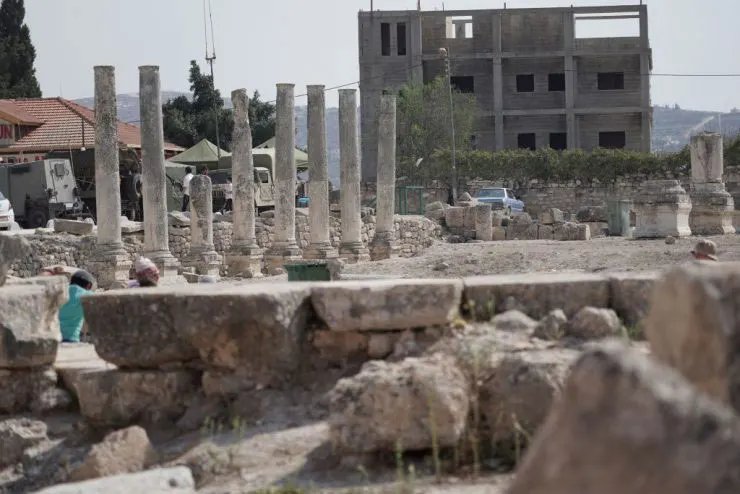
TEL AVIV – A leading archaeology journal has effectively barred submissions by Israelis on Judea and Samaria unless they «have cooperated with the relevant Palestinian authorities,» in what analysts say is a microcosm of the harm caused by a global campaign to whitewash the Jewish people’s history in the Land of Israel.
According to a report recently published by The Press Service of Israel (TPS-IL), the Palestine Exploration Quarterly (PEQ)—a peer-reviewed journal of the London-based Palestine Exploration Fund (PEF)—is refusing to accept submissions from researchers affiliated with institutions operating in what it refers to as «occupied territory,» citing concerns over alleged Israeli violations of international law.
«Publication in PEQ is guided by the PEF’s ethical policy. The main aspect of this is international law, by which many academic institutions and publications, including PEQ, are bound,» Charlotte Whiting, the journal’s editor-in-chief, told TPS-IL.
The journal’s website states that it «does not collaborate with institutions founded by an occupying power based in any occupied territory, and will not support, encourage, fund, or publish research by any academic associated with such institutions.»
LEADING EVANGELICALS IN PUSH TO HAVE PRESIDENT TRUMP RECOGNIZE ISRAELI SOVEREIGNTY OVER ‘BIBLICAL HEARTLAND’
Excavations at Tel Shiloh, best known as the location where the Tabernacle stood before King Solomon built the First Temple. (Shlomo Matityahu/TPS-IL)
Israeli archaeologists told TPS-IL that any cooperation with Palestinian authorities or colleagues was practically impossible, because they «would be treated as traitors for this.» They also said that their work is in many instances shunned by the broader academic world and, as such, researchers are forgoing focus on the biblically significant areas of Judea and Samaria (West Bank) to protect their careers.
«What we’re seeing is a deliberate attempt to undermine Jewish historical ties to the land,» Yishai Fleisher, international spokesman for Hebron, the cradle of Jewish civilization located in Judea, told Fox News Digital. «There are three strategies at play: the Palestinians either acknowledge Jews were once here but argue they no longer belong, deny any Jewish connection at all, or destroy the evidence outright.»
Fleisher noted ongoing efforts by Palestinian authorities and others to rename historical Jewish sites. «They call Hebron ‘Al-Khalil,’ and the Cave of the Patriarchs becomes the ‘Ibrahimi Mosque.’ The Temple Mount is now the ‘Al-Aqsa complex,’ and Rachel’s Tomb has been rebranded as the ‘Bilal Bin Rabah Mosque,’» he said.
To counter this, he says Israeli advocates are working to mark and preserve ancient Jewish landmarks. «We added an Israeli flag and a menorah to a building originally constructed by King Herod 2,000 years ago—which itself stands atop a tomb dating back 3,500 years—to make it unmistakably clear it’s a Jewish site, despite the later addition of three minarets by Muslim conquerors.»
The Palestinian Authority, which gained non-member observer state status at the United Nations in 2012, has been spearheading the campaign to rewrite history in global forums that contain automatic anti-Israel majorities.

Visitors arrive at Sebastia National Park in Samaria. Sebastia was the Israelite kingdom during the reigns of Omri and Ahab. (Hillel Maeir/TPS-IL)
Among them is the United Nations Educational, Scientific and Cultural Organization (UNESCO), which in 2016 registered the Cave of the Patriarchs—the resting place of Abraham, Isaac, Jacob and their wives Sarah, Rebecca, and Leah located in Hebron—in the name of the «State of Palestine» on its «List of World Heritage in Danger.» More recently, UNESCO, in September 2023, named the Tell es-Sultan site near Jericho, which contains ruins dating back to the ninth millennium BCE, including evidence of one of humanity’s first-known villages, as a «World Heritage Site in Palestine.»
In December 2021, the United Nations General Assembly passed a non-binding resolution referring to the Temple Mount, Judaism’s holiest site—located in Jerusalem but beyond the 1967 borders—only by its Muslim name, «Haram al-Sharif.» In September 2024, P.A. leader Mahmoud Abbas called the Temple Mount the «exclusive property of Muslims.» Last week, Abbas said in a rare televised speech that the Koran describes the Jewish Temple as being in Yemen.
GOP LAWMAKERS PUSH TRUMP TO RECOGNIZE WEST BANK AS ISRAELI TERRITORY
Naomi Kahn, director of the international division at Regavim, a think tank focused on Israeli sovereignty, said the P.A. is actively building over key archaeological sites as part of this initiative.
«In Solomon’s Pools, which is under P.A. jurisdiction in accordance with the Oslo Accords, they’re constructing condominiums directly on top of ancient Jewish infrastructure,» Kahn told Fox News Digital. «These are internationally recognized heritage sites, but the agreements are being violated.
She cited the Hasmonean fortresses near Jericho as a major example. «The burial grounds of Hasmonean kings—the largest necropolis in the Middle East from the Second Temple period—have been plowed and used for farming and construction. In one case, we found human bones scattered in the fields. The Israeli Civil Administration had to collect and rebury them.»
Khan also referenced Sebastia, the Greco-Roman name for the ancient city of Samaria. Originally founded by King Omri in the 9th century BC, Samaria became the capital of the northern Kingdom of Israel, as noted in the Hebrew Bible (1 Kings 16:24). It served as the kingdom’s capital until it fell to the Assyrians in 722 BCE. Centuries later, Herod the Great rebuilt the city and renamed it Sebaste—Sebastia in later usage—in honor of the Roman Emperor Augustus, whose name in Greek, «Sebastos,» carried the same imperial meaning.
In March of last year, Palestinian construction workers built an illegal road through Sebastia, which is located near the city of Nablus, also known by its biblical name, Shechem.
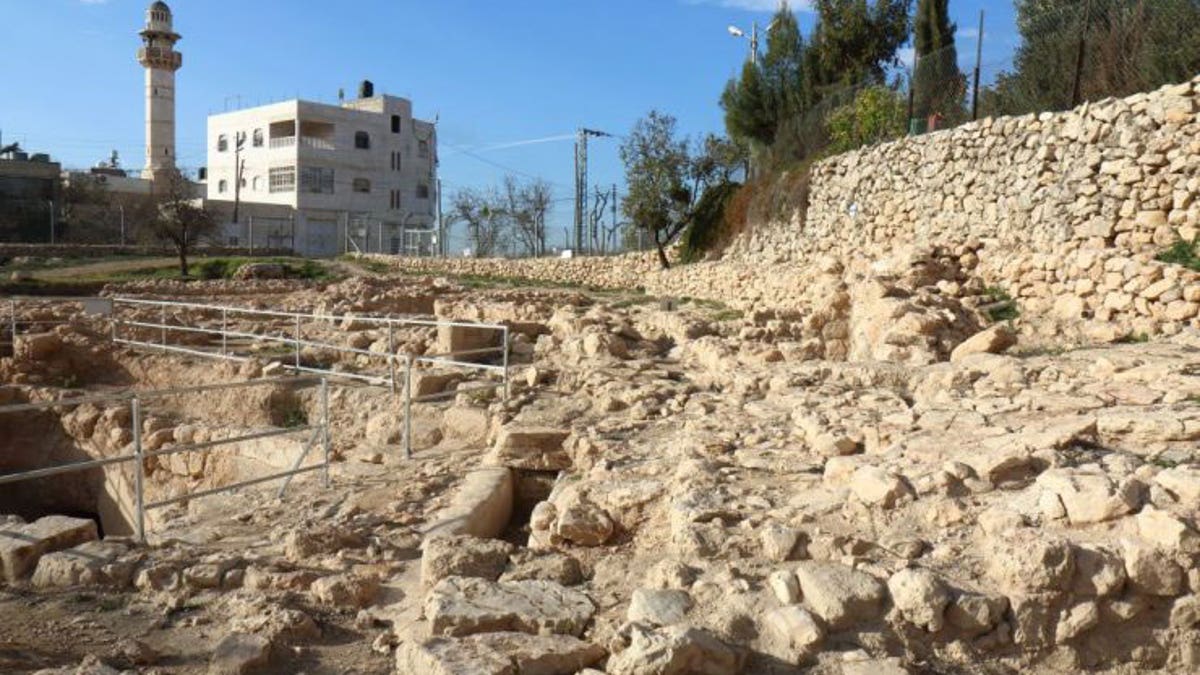
Antiquities of the Jewish community in Hebron. (Hillel Maeir/TPS-IL)
Khan said other sites facing encroachment include Joshua’s Altar, where a new Palestinian neighborhood is being developed nearby, and Joseph’s Tomb, which is largely inaccessible to Jewish Israelis
«I’m disgusted, but not concerned,» Sandra Hagee Parker, Chairwoman of the Christians United for Israel Action Fund, told Fox News Digital in a statement. «Where are the Romans, Ottomans, and Crusaders? The enemies of Israel are remembered only for their ultimate defeat by the God of Abraham and His children.
«Moreover, the grotesque effort to deny the Jewish connection to the Land is a rejection of God Himself,» she continued. «It is both antisemitic and anti-Christian—and it will never succeed. My only concern is that America continues to stand shoulder to shoulder with Israel and her people,» she added.
Ze’ev Orenstein, Director of International Affairs at the Jerusalem-based City of David Foundation, stressed that «from its inception in 1964, the Palestine Liberation Organization—the forerunner of today’s Palestinian Authority—was founded on the denial of thousands of years of Jewish history and heritage rooted in the Land of Israel in general, and in Jerusalem, Judea, and Samaria—the Biblical heartland—in particular.
«This denial,» Orenstein told Fox News Digital, «aimed to delegitimize and undermine the Jewish people’s legal, moral and historical right to sovereignty in the Land of Israel, portraying a people with some of the deepest archaeological ties to the land as occupiers and colonizers.
«For that reason, the Islamic Waqf carried out a campaign of systematic destruction of antiquities atop the Temple Mount in the late 1990s, and Palestinian leadership continues to deny, damage, and destroy Jewish heritage sites throughout Judea and Samaria,» he said.
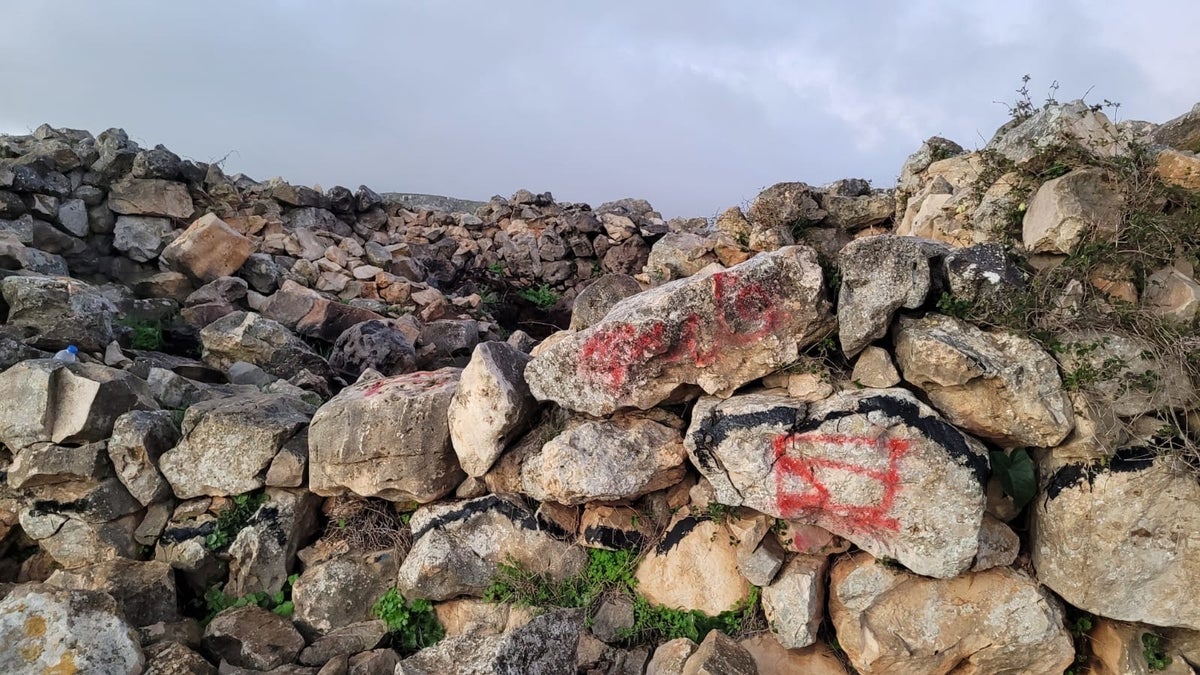
Following the destruction and severe damage by Palestinian rioters at the ‘Joshua Altar’ archeological site located on the spur of Mt. Ebal, dozens of Jewish worshipers arrived for morning prayers at the site. (TPS)
In response, Israeli Prime Minister Benjamin Netanyahu in July 2023 announced a $33 million program to safeguard and rehabilitate archaeological sites in the biblical heartland.
«In every corner of Judea and Samaria, one need only to put spade to ground in order to uncover archaeological finds that attest to our deep roots in the Land of Israel,» Netanyahu said at the time. «This plan will encourage tourism, education and [present] information for these important sites that tell the story of our people in Judea and Samaria.»
Rev. Dr. Petra Heldt, professor at the Jerusalem University College and director of the Ecumenical Theological Research Fraternity in Israel, cited biblical texts and ongoing excavations as proof of longstanding Jewish presence in the region.
«There are hundreds of biblical place names showing Jews lived in Judea and Samaria since the time of Abraham,» Heldt told Fox News Digital. «The Palestinian Authority has tried to erase this evidence, but it’s nearly impossible to eliminate.»
Heldt pointed to Shiloh as a thriving example, with an active kibbutz and archaeological site where new discoveries are regularly unearthed. «Jewish communities are not only living in their ancestral homeland—they’re documenting it. You can see the impact of various layers of occupation over the last hundred years.»
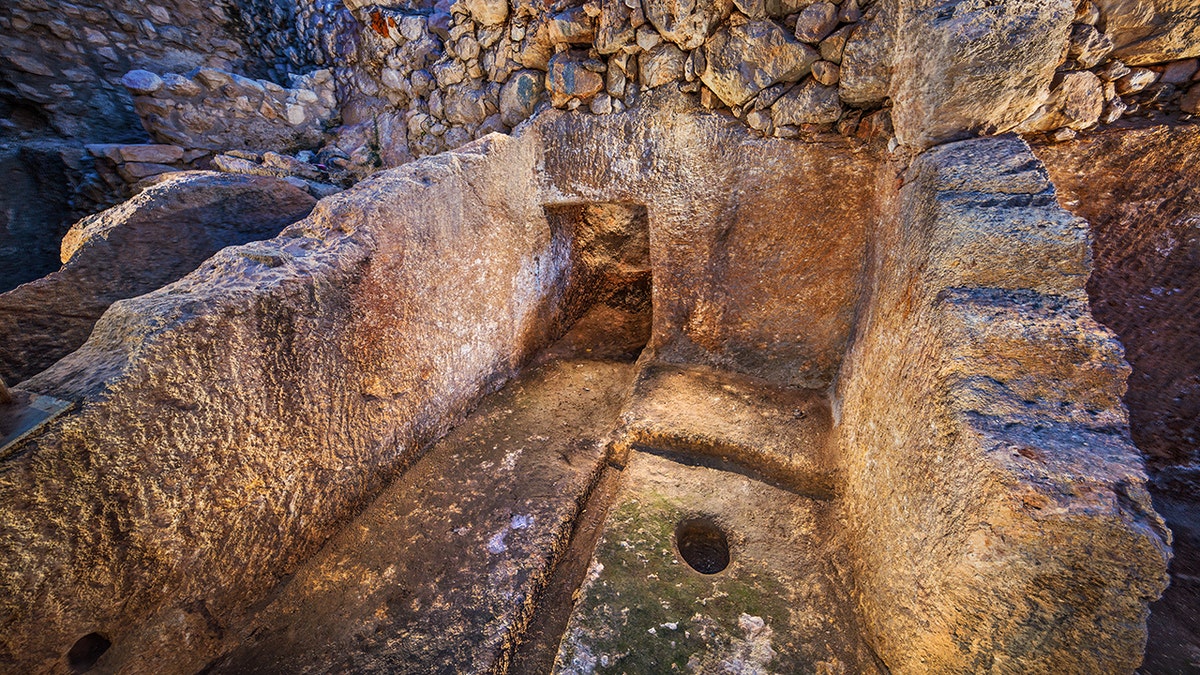
A carved installation identified as an altar, with a channel for liquid drainage. (Credit: Kobi Harati, City of David)
CLICK HERE TO GET THE FOX NEWS APP
According to Heldt, whose organization hosts global lectures and educational programs on archaeological findings in Judea and Samaria, more international support is needed to protect these sites. «We must involve the media, universities, artists, filmmakers and writers to tell these stories and make these places matter globally,» she said.
The struggle to preserve Jewish historical sites in Judea and Samaria is not just about stones or ruins—it’s a battle over narrative, legitimacy and identity, according to the experts.
«The way to fight this is to build, to educate and to assert our sovereignty,» Hebron’s Fleisher said. «That’s how we strengthen our connection to the land and protect the truth of our history.»
INTERNACIONAL
Trump admin on pace to shatter deportation record by end of first year: ‘Just the beginning’

DHS confirms cartel bounties on ICE and CBP agents in Chicago
Assistant Secretary of the Department of Homeland Security Tricia McLaughlin says Mexican cartels and U.S. gangs are offering up to $50,000 for attacks on federal officers in a coordinated campaign targeting ICE and CBP agents on ‘America Reports.’
NEWYou can now listen to Fox News articles!
EXCLUSIVE: With over 500,000 illegal aliens deported since President Donald Trump took office in January, the administration is on track to significantly exceed the record number of illegals deported out of the United States.
Since Trump’s return to the Oval Office on Jan. 20, the administration has deported over 515,000 illegal aliens, according to a high-ranking official at the Department of Homeland Security.
DHS Assistant Secretary Tricia McLaughlin told Fox News Digital the administration is «on pace to shatter historic records» by deporting 600,000 illegals by the end of Trump’s first year back in office. She said that in total, more than two million illegal aliens have left the U.S., including 1.6 million who voluntarily self-deported, as well as the over 515,000 deportations. Another 485,000 illegal aliens have been arrested by DHS since Trump took office.
McLaughlin said that «this is just the beginning» and that Trump and Homeland Security Secretary Kristi Noem «have jumpstarted an agency that was vilified and barred from doing its job for the last four years.»
DEM JUDGE IN HOT SEAT AFTER DHS EXPOSES ‘WHOLE NEW LEVEL’ OF ACTIVISM, SHELTERING ILLEGAL IMMIGRANT
A high-ranking Homeland Security official said the administration is set to «shatter» the record for illegal aliens deported in President Trump’s first year. (White House; Rebecca Blackwell/AP Photo)
«Illegal aliens are hearing our message to leave now or face the consequence. Migrants are now even turning back before they reach our borders,» said McLaughlin, pointing to what she said has been a 99.99 percent drop in migration through Panama’s Darien Gap, which is a key migration route to the U.S.
«In the face of a historic number of injunctions from activist judges, ICE, CBP, and the U.S. Coast Guard have made historic progress to carry out President Trump’s promise of arresting and deporting illegal aliens who have invaded our country.»
Just this weekend, DHS said that it continued its sweep of the «worst of the worst» criminal illegal aliens across the country amidst the ongoing government shutdown. Over the weekend, DHS said it arrested illegals convicted of rape of a child, assault, hit-and-run, kidnapping and other crimes.
One of those arrested was Erick Xavier Romero, a Dominican national, who the agency said was convicted of rape of a child in Boston. Another illegal, Guatemalan national, German Osvaldo Cortez-Chajon, was arrested this weekend after being convicted of traveling to meet a child for an unlawful sex act in Dale County, Alabama. A third illegal, Mexican national Graciano Lopez-Flores, was arrested following a conviction of indecent liberties with a child in Orange County, North Carolina.
DHS FLIPS SCRIPT ON MEDIA NARRATIVE WITH NEW DETAILS ABOUT ILLEGAL TEEN ARRESTED BY ICE: ‘SAFETY THREAT’

Left to right, from top: Erick Xavier Romero, German Osvaldo Cortez-Chajon, Graciano Lopez-Flores, Shahed Hassan, Van Pham, Patricia Pimental-Cordero, Ramona Mercado-Vasquez and Karlett Zagal-Salazar. (ICE; DHS)
Also in North Carolina, ICE arrested Shahed Hassan, an illegal from Bangladesh, who was convicted of simple assault, possession of drug paraphernalia, illegally carrying a concealed gun, driving while impaired, probation violation, felony larceny and domestic violence protection order violation in Wake County.
Just to the north, ICE arrested Van Pham from Laos, who was convicted of five counts of abduction and burglary in Fairfax County, Virginia.
In Massachusetts, ICE arrested Patricia Pimental-Cordero, from the Dominican Republic, who was convicted of two counts of hit-and-run in Lawrence, Massachusetts.
Another illegal, Ramona Mercado-Vasquez from the Caribbean island of Dominica, was arrested by ICE in Bergen County, New Jersey, following a conviction for kidnapping and robbery.
In Wisconsin, ICE arrested Mexican national Karlett Zagal-Salazar, who was convicted of drug trafficking.
ICE REVEALS ‘DISTURBING DETAILS’ AFTER AGENCY RESCUED 3-YEAR-OLD ABDUCTED TO MEXICO
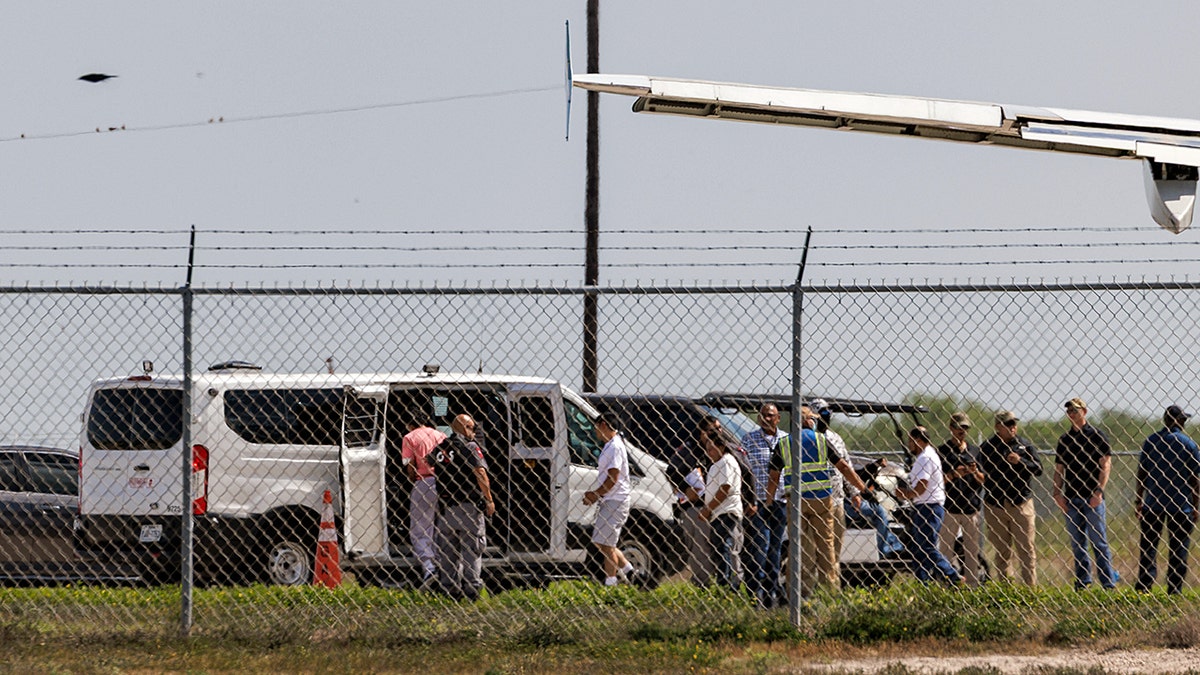
Shackled migrants board a transport van after getting off a plane at the Valley International Airport, Sunday, Aug. 31, 2025, in Harlingen, Texas. (Michael Gonzalez/AP Photo)
Commenting on the arrests, McLaughlin told Fox News Digital that «nothing—not even a government shutdown—will slow us down from making America safe again.»
CLICK HERE TO DOWNLOAD THE FOX NEWS APP
She slammed the Democratic Party, saying, «While Democrats in Congress continue to keep the government shutdown, our ICE law enforcement officers aren’t slowing down in arresting the worst of the worst criminal illegal aliens.»
donald trump,immigration,illegal immigrants,border security,kristi noem,homeland security
INTERNACIONAL
Bolivia: los desafíos del próximo gobierno de Rodrigo Paz

El candidato de centroizquierda del Partido Demócrata Cristiano (PDC), Rodrigo Paz, se impuso con el 54% de los votos al obtener casi diez puntos de ventaja sobre su rival, Jorge Tuto Quiroga. Este triunfo no solo pone fin a dos décadas de hegemonía del Movimiento al Socialismo (MAS), liderado por Evo Morales, sino que también confiere una sólida legitimidad a la nueva administración. Sin embargo, los retos que se vislumbran en el ámbito político, para el gobierno de Paz, que asumirá el 9 de noviembre próximo, son considerables.
La primera gran prueba para Paz será la consolidación de su base de poder en el legislativo. La principal debilidad radica en que el Partido Demócrata Cristiano (PDC) funcionó como un «vientre de alquiler», una estructura instrumental sin arraigo social o nacional que respaldara la candidatura. Aunque Paz capitalizó el voto del «núcleo duro» del MAS en varias regiones, no heredó la estructura partidaria ni la capacidad de movilización de su predecesor. Esta debilidad partidaria genera dos puntos de fricción.
Dentro de la bancada del PDC podrían emerger múltiples facciones, cada una buscando cuotas de poder. Las tensiones que ya se evidenciaron entre Paz y su compañero de fórmula, Edman Lara, durante la campaña podrían exacerbarse, complicando la gobernanza del Ejecutivo y la gestión de la Asamblea Legislativa Plurinacional (ALP).
Así mismo, Paz deberá negociar consensos con otros partidos. Si bien cuenta con el respaldo explícito de Unidad de Samuel Doria Medina, que se concretó en el balotaje, las relaciones con el partido de Quiroga, LIBRE, son más tensas. Aunque comparten afinidades ideológicas (economía de mercado, apertura exterior, respeto a las instituciones), las secuelas de la agresiva campaña electoral dificultarán una posible alianza. La mayoría simple en la ALP está asegurada con la alianza del PDC con Unidad, pero para reformas de mayor calado, como un eventual cambio constitucional, necesita acercarse y pactar con LIBRE, que posee la llave de los dos tercios.
Un segundo desafío crucial será la relación con los poderosos y decisivos movimientos sociales. El apoyo de estas organizaciones a la fórmula del PDC, si bien fue un factor determinante para su victoria, no garantiza una lealtad incondicional. Con un notable historial de empoderamiento político, estas organizaciones buscarán proteger sus privilegios y, si se sienten desfavorecidas, podrían recurrir a movilizaciones que amenacen la estabilidad social.
Su apoyo será fundamental para legitimar cualquier ajuste económico y social. El manejo de las tensiones con estos sectores y la forma en que el nuevo gobierno gestione el legado del «masismo» serán vitales para mantener la estabilidad del país. En muchos sentidos estas son fuerzas antisistema que pueden bloquear el gobierno de Paz.
La capacidad del nuevo gobierno para emprender cualquier política económica y social está condicionada por la superación de estos dos desafíos políticos: necesita un legislativo alineado con el Ejecutivo y una articulación efectiva con los movimientos sociales.
Una vez resueltos los obstáculos políticos, el siguiente gran desafío es el económico. Paz recibe un país en crisis, con escasez de dólares, inflación y reservas internacionales en descenso. La eliminación de los subsidios a los combustibles, una medida crucial para la sostenibilidad fiscal, podría provocar un grave descontento social. El precedente de 2010, cuando Evo Morales tuvo que dar marcha atrás a un ajuste similar por la presión de los movimientos sociales, subraya la delicadeza de esta situación.
El 19 de octubre no solo marcó el fin de una era política, sino que también abrió un interrogante crucial: ¿Se encamina Bolivia hacia una verdadera transformación o hacia una continuación del modelo del MAS por otros medios?
La respuesta a esta pregunta definirá la dirección del país en los próximos años. Si el nuevo gobierno de Rodrigo Paz opta por la primera vía, será indispensable abordar reformas estructurales que permitan fortalecer las instituciones democrática. Estas reformas incluirían: la reducción del presidencialismo y generar un sistema de justicia libre de la influencia política.
Si, por el contrario, el gobierno de Paz se concentra únicamente en la solución de los problemas económicos más apremiantes —como la inflación y la escasez de hidrocarburos—, ignorando sus causas profundas, el modelo del MAS podría persistir. Este modelo se caracteriza por una economía de base estrecha, sin una industrialización significativa ni una generación estable de empleo.
Es probable que el MAS, ahora sin mayoría parlamentaria, ofrezca un margen de maniobra inicial a la nueva administración. Sin embargo, el panorama político no estará completo hasta las elecciones subnacionales del próximo año. Solo entonces se definirá con mayor claridad la nueva correlación de fuerzas en el país. Por ahora, Bolivia da sus primeros pasos fuera del dominio hegemónico del MAS y de la sombra de Morales.
Flores es Cientista político. Profesor e investigador de la Universidad San Francisco Xavier (Sucre, Bolivia). Doctor en Ciencias Sociales con mención en Estudios Políticos por FLACSO-Ecuador.
© Clarín y Latinoamerica21.com
INTERNACIONAL
New video purportedly shows Louvre thieves in action during brazen daytime heist

NEWYou can now listen to Fox News articles!
A new video has emerged showing what could be the Louvre thieves in action as they carried out Sunday’s daylight robbery at Paris’s world-famous museum.
The footage, obtained by French broadcaster BFMTV, purportedly shows what has been called one of the most brazen art thefts in recent memory.
The short clip appears to show someone inside the Louvre’s Apollo Gallery, which was home to some of the museum’s most priceless treasures.
Footage taken by an anonymous bystander shows a person in a bright yellow jacket standing beside a glass display case.
BRAZEN LOUVRE ROBBERY CREW MAY HAVE BEEN HIRED BY COLLECTOR, PROSECUTOR SAYS
New footage purportedly shows a person in a yellow jacket beside a display case amid the Louvre heist in Paris. (BFMTV)
The amateur footage was replayed for BFMTV, who filmed that phone’s screen and verified it Sunday. The Associated Press has not been able to independently confirm its authenticity.
According to French authorities, the thieves executed a highly coordinated operation that unfolded just after the museum opened to the public in the morning.
At around 9:30 a.m., thieves used a basket lift to reach the Louvre’s facade, forcing open a window to gain entry to the Apollo Gallery, which contains displays of the royal jewels.
LOUVRE MUSEUM CLOSED AFTER ROBBERY, FRENCH OFFICIAL SAYS
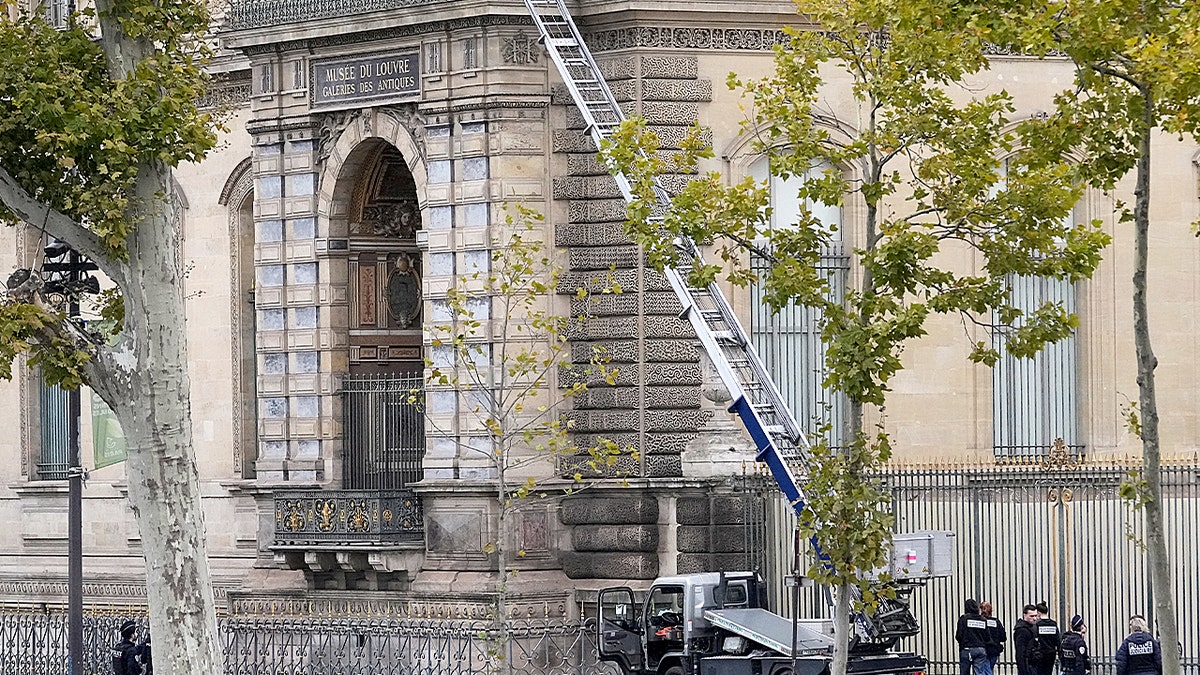
Thieves executed a daytime heist at the Louvre Museum, stealing French crown jewels. (Thibault Camus : AP)
According to reports, the group made off with jewels once belonging to Napoleon III’s court, including pieces from Empress Eugénie’s personal collection.
«They breached through a window and made this really brazen. These guys are fast and moving quickly with a purpose, and they breach, and they get in there really quickly,» former FBI Art Crime expert Tim Carpenter told Fox News Digital.
After the heist, Interior Minister Laurent Nuñez spoke to radio station France Inter and said the thieves «entered from the outside using a basket lift» and «a disc cutter» to slice through glass panes containing precious jewels.
TOURISM SAFETY FEARS RISE AFTER MUSEUM THIEF STEALS PHARAOH’S PRICELESS BRACELET: 4 THINGS TO KNOW

A crown worn by French Empress Eugenie, which was targeted by thieves during a heist at Paris’ Louvre Museum on Oct. 19, 2025 but was dropped during their escape, on display in this undated still frame from a video. (Louvre Museum/Handout via Reuters)
«The investigation has begun, and a detailed list of the stolen items is being compiled,» the ministry also said in a statement. «Beyond their market value, these items have inestimable heritage and historical value.»
CLICK HERE TO GET THE FOX NEWS APP
The Louvre remained closed on Monday as investigators combed through the scene and reviewed surveillance footage.
Fox News Digital has reached out to the Louvre Museum and the Ministry of Culture for comment.
travel,crime,museums exhibits,europe

 CHIMENTOS2 días ago
CHIMENTOS2 días agoLa fuerte actitud de Manu Urcera con Indiana Cubero que reveló la verdad de la interna familiar: “El saludo del piloto a la hija de Nicole Neumann por su cumpleaños”

 POLITICA2 días ago
POLITICA2 días agoUn juez federal rechazó el habeas corpus presentado por Lázaro Báez y ordenó trasladarlo a la cárcel de Ezeiza

 CHIMENTOS1 día ago
CHIMENTOS1 día agoLa cruda confesión del Turco Naim a 1 año de la separación de Emilia Attias: «Me di cuenta que hay que aprender a estar solo»













